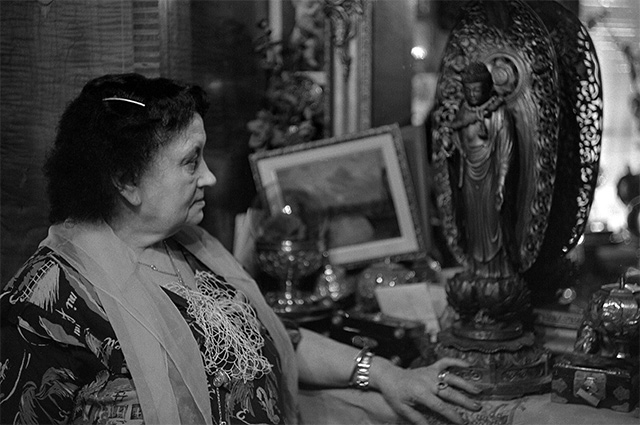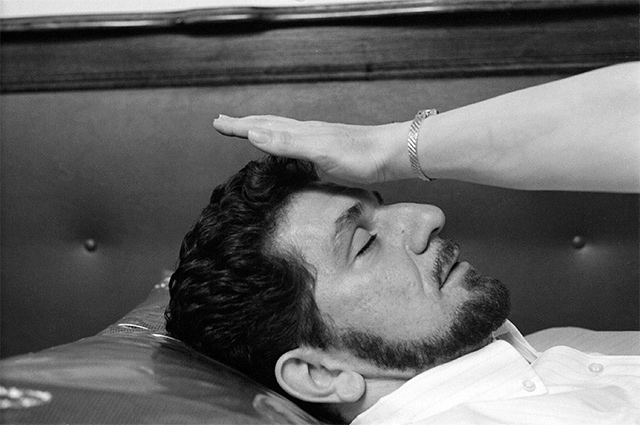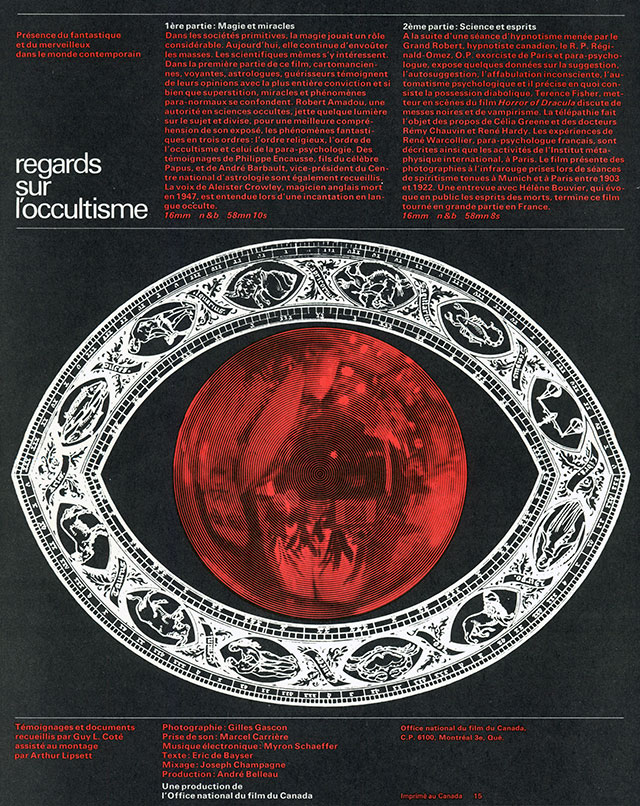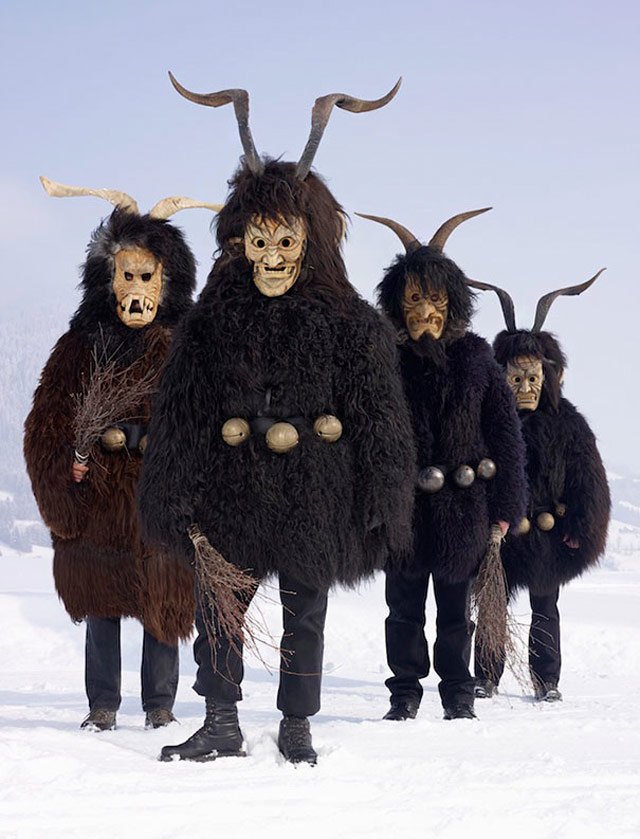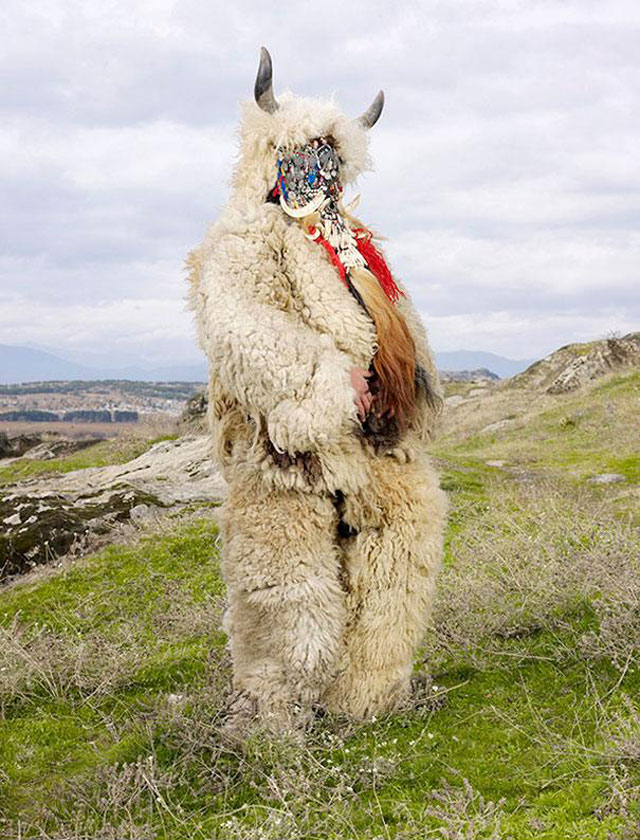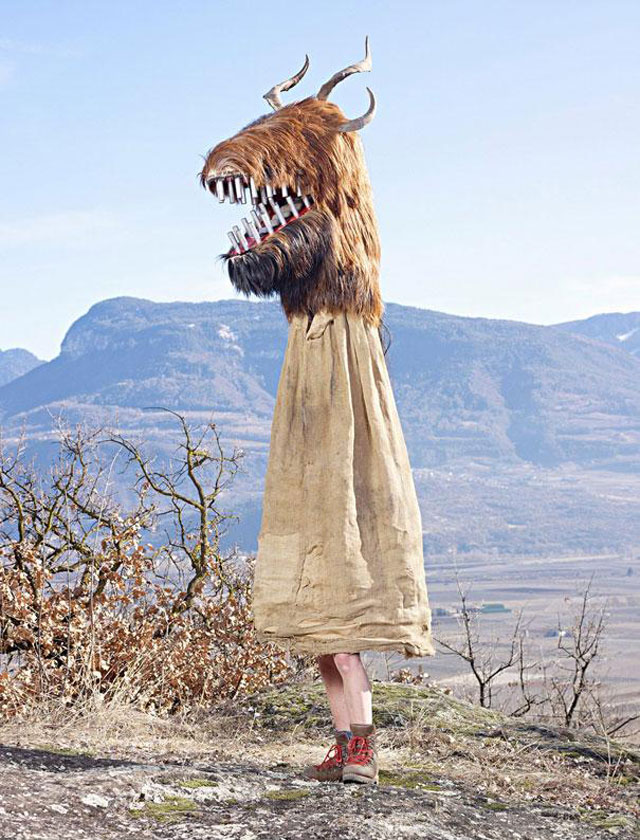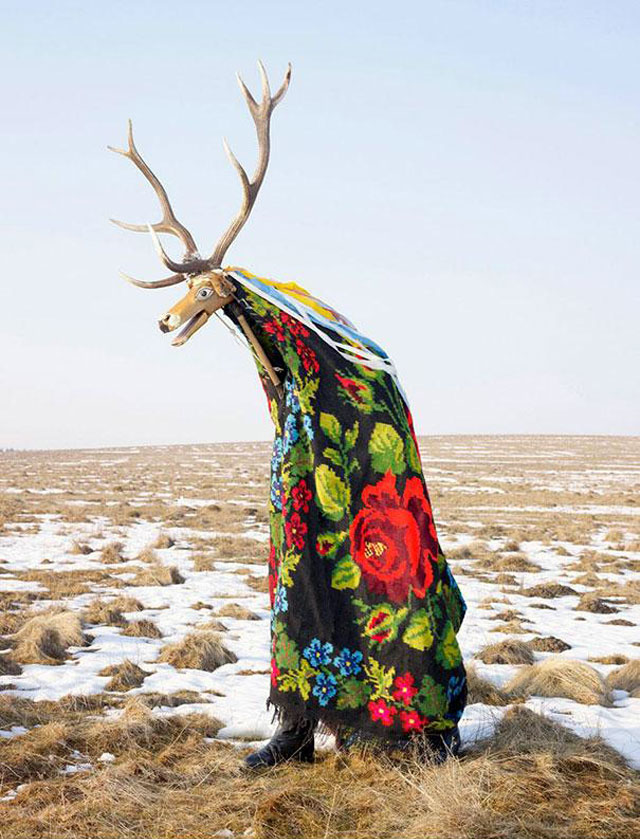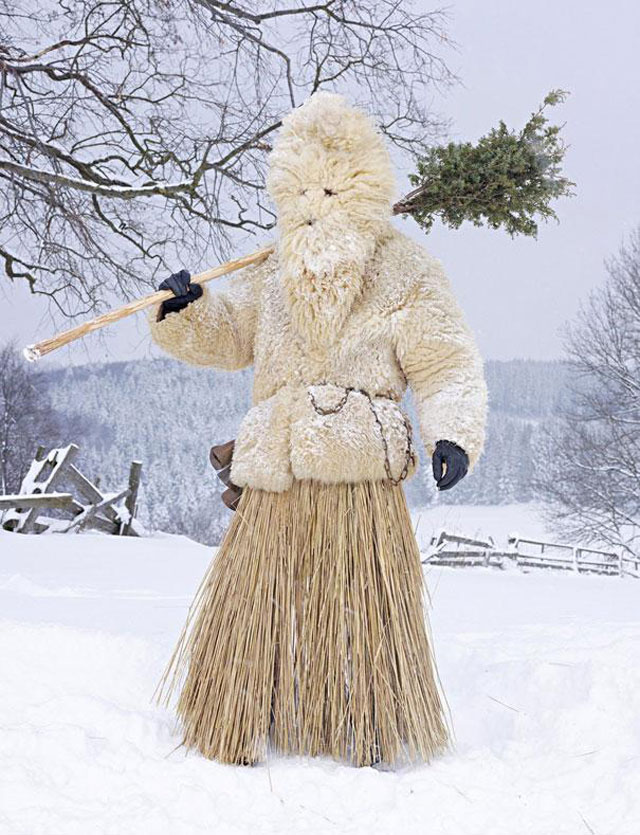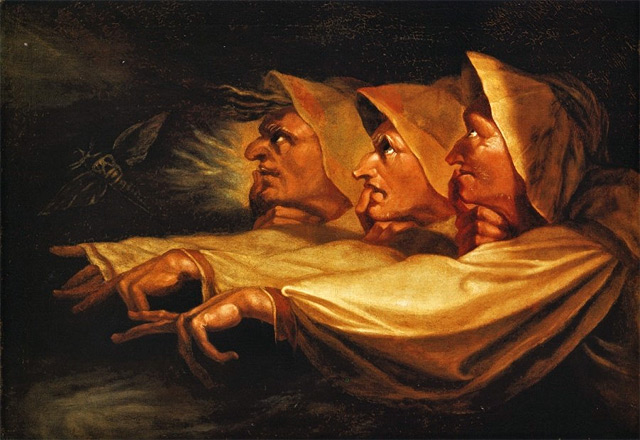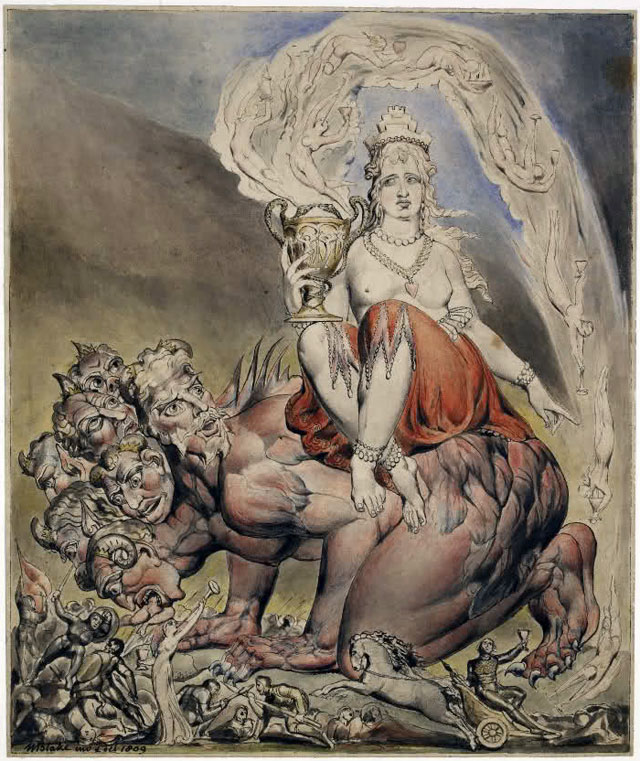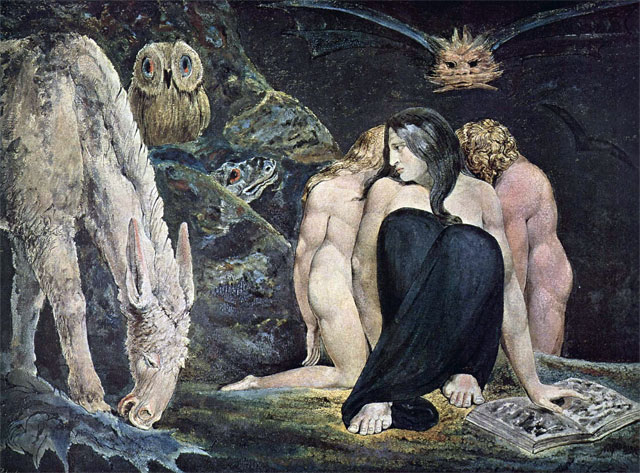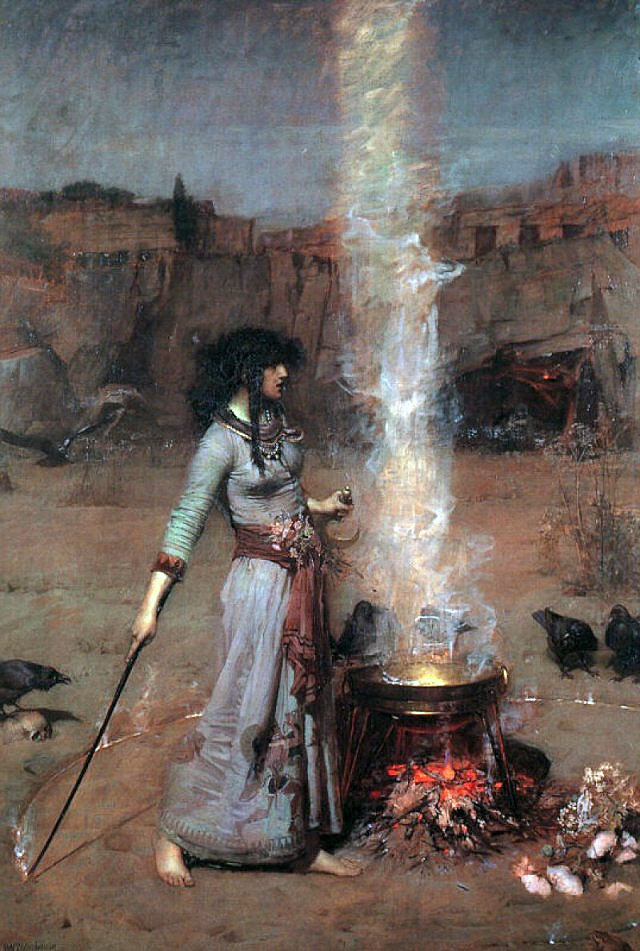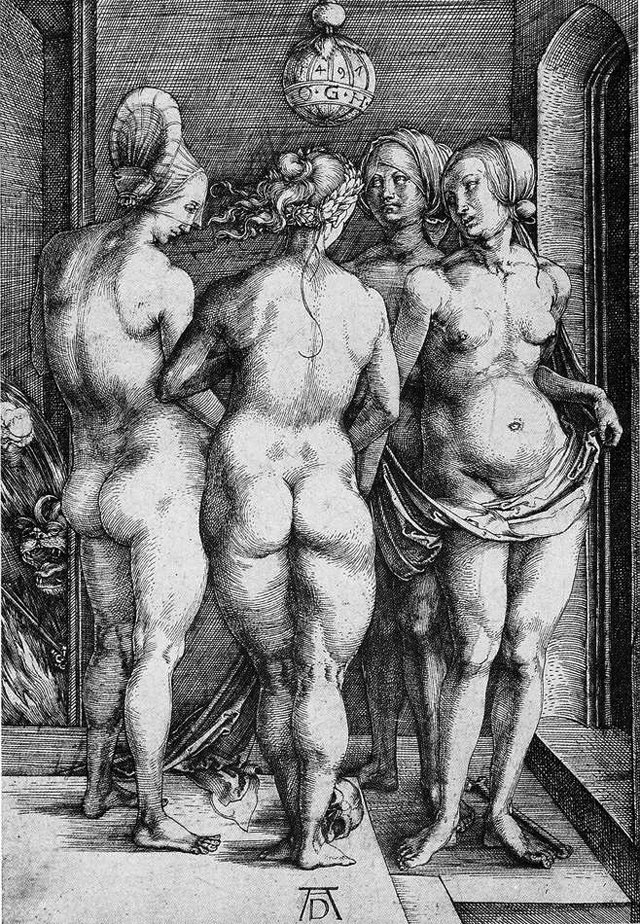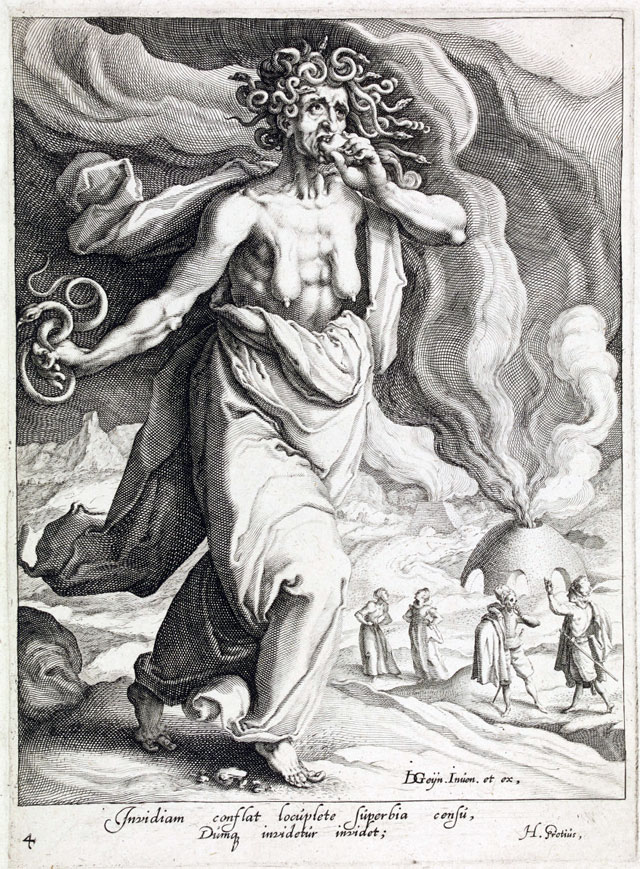Regards sur l’occultisme (1re partie) – Magie et miracles
Guy L. Coté, Canada, 1965, 58 min 16 s
Dans ce long métrage documentaire, des cartomanciennes, voyantes, astrologues et guérisseurs livrent leurs opinions. Des autorités en sciences occultes telles que Robert Amadou, Philippe Encausse, fils du célèbre Papus, et André Barbault, jettent une lumière sur le sujet.
Regards sur l’occultisme (2e partie) – Science et esprits
Guy L. Côté, Canada, 1965, 58 min 16 s
Ce long métrage documentaire présente quelques données sur la suggestion, l’autosuggestion, l’affabulation inconsciente et l’automatisme psychologique avec R.P. Réginald-Omez, O.P., exorciste vivant à Paris et parapsychologue. Le film expose également la différence entre les messes noires et le vampirisme.
